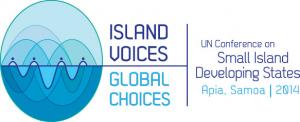Global Tsunami Warning and Mitigation System
United States National Oceanic and Atmospheric Administration
#SDGAction40020
Description
Each tsunami warning system has established its own implementation and action plans. These are based on the requirements as well as the expected resources in the region. Depending on the ICG, there is a meeting every year or every other year in which the progress and gaps are noted. The US contributes to the implementation plan and assists in meeting its action plan through its supported activities. In evaluating the status of the Tsunami Warning System, measurable and monitorable performance indicators have and are being established. Some indicators are that each Members States (SIDS) have designated Tsunami National Contacts and Tsunami Warning Focal Points, seismic and sea level stations contributions to the Tsunami Warning Centers for monitoring forecasting and issuing tsunami warnings, working communication systems for the receipt and dissemination of tsunami products, and preparedness measures such as tsunami evacuation maps, exercises, and awareness and education campaigns.
The ITIC and CTWP support countries and the ICGs to provide capacity building and technology transfer in close cooperation with the UNESCO IOC and under the direction of the ICG Member States. Both centers also support direct requests from Countries on a bi-lateral basis. The ITIC was established by the UNESCO IOC, and has been hosted by NOAA since its 1965 establishment, to support the Pacific requirements. After the 2004 Indian Ocean Tsunami, the ITIC provided leadership to countries and the region to establish the new Indian Ocean Tsunami Warning and Mitigation System.
The US contributes critical services and support activities as regional and/or country initiatives as a multi-stakeholder partnership at both the regional and global scale. The activities are coordinated through the ICGs, as well as regional organizations such as the Secretariat of the Pacific Community (SPC) Applied Geoscience and Technology Division (SOPAC), and with the relevant international organizations (e.g., UN organizations and the World Bank) and country donor agencies.Real-time tsunami alerts are provided to the Pacific and Caribbean by the US Pacific Tsunami Warning Center (PTWC) and National Tsunami Warning Center (US NTWC), and the International Tsunami Center (ITIC) and Caribbean Tsunami Warning Program (CTWP) provide technical assistance to countries to establish and strengthen their national systems through outreach, educational tools, and training. The USAID/OFDA supports tsunami early warning system initiatives in disaster risk reduction at the national to local level and especially for communities at risk. The US Geological Survey advises national seismological agencies on earthquake monitoring, and supports the Global Seismological Network that serves as the backbone earthquake monitoring system for tsunami warning.
SDGS & Targets
Goal 14
Conserve and sustainably use the oceans, seas and marine resources for sustainable development
14.1
By 2025, prevent and significantly reduce marine pollution of all kinds, in particular from land-based activities, including marine debris and nutrient pollution
14.1.1
(a) Index of coastal eutrophication; and (b) plastic debris density
14.2
By 2020, sustainably manage and protect marine and coastal ecosystems to avoid significant adverse impacts, including by strengthening their resilience, and take action for their restoration in order to achieve healthy and productive oceans
14.2.1
Number of countries using ecosystem-based approaches to managing marine areas
14.3
Minimize and address the impacts of ocean acidification, including through enhanced scientific cooperation at all levels
14.3.1
14.4
By 2020, effectively regulate harvesting and end overfishing, illegal, unreported and unregulated fishing and destructive fishing practices and implement science-based management plans, in order to restore fish stocks in the shortest time feasible, at least to levels that can produce maximum sustainable yield as determined by their biological characteristics
14.4.1
14.5
By 2020, conserve at least 10 per cent of coastal and marine areas, consistent with national and international law and based on the best available scientific information
14.5.1
14.6
By 2020, prohibit certain forms of fisheries subsidies which contribute to overcapacity and overfishing, eliminate subsidies that contribute to illegal, unreported and unregulated fishing and refrain from introducing new such subsidies, recognizing that appropriate and effective special and differential treatment for developing and least developed countries should be an integral part of the World Trade Organization fisheries subsidies negotiation
14.6.1
Degree of implementation of international instruments aiming to combat illegal, unreported and unregulated fishing
14.7
By 2030, increase the economic benefits to Small Island developing States and least developed countries from the sustainable use of marine resources, including through sustainable management of fisheries, aquaculture and tourism
14.7.1
Sustainable fisheries as a proportion of GDP in small island developing States, least developed countries and all countries
14.a
Increase scientific knowledge, develop research capacity and transfer marine technology, taking into account the Intergovernmental Oceanographic Commission Criteria and Guidelines on the Transfer of Marine Technology, in order to improve ocean health and to enhance the contribution of marine biodiversity to the development of developing countries, in particular small island developing States and least developed countries
14.a.1
14.b
Provide access for small-scale artisanal fishers to marine resources and markets
14.b.1
Degree of application of a legal/regulatory/policy/institutional framework which recognizes and protects access rights for small‐scale fisheries
14.c
Enhance the conservation and sustainable use of oceans and their resources by implementing international law as reflected in United Nations Convention on the Law of the Sea, which provides the legal framework for the conservation and sustainable use of oceans and their resources, as recalled in paragraph 158 of "The future we want"
14.c.1
Number of countries making progress in ratifying, accepting and implementing through legal, policy and institutional frameworks, ocean-related instruments that implement international law, as reflected in the United Nations Convention on the Law of the Sea, for the conservation and sustainable use of the oceans and their resources
SDG 14 targets covered
Deliverables & Timeline
Resources mobilized
Partnership Progress
Feedback
Action Network

Timeline
Entity
SDGs
Region
- North America
Countries
Contact Information
Kristen Koyama, International Affairs Specialist

